
Shutterstock.com
The pharmacy preregistration exam is probably the hardest exam a preregistration trainee will face in their career to date. Fresh out of university and thrown into what feels like the deep end as a trainee pharmacist for an intense year is a challenge — no doubt about it. However, as much as it may seem like it at times, the preregistration exam has not been designed and set for trainees to fail.
The General Pharmaceutical Council has a framework covering what is expected from individuals, highlighting areas that need to be focused on. Preregistration trainees have access to a tutor, a training programme, and often a support network of friends to faciliate exam preparation. Everything required to pass the exam is at the individual’s disposal. The difference between a pass or fail tends to come down to preparation. As the saying goes, ‘if you fail to prepare, you prepare to fail’. That being said, here are eight tips to help trainees ace the calculation paper in the preregistration exam.
1. Work efficiently
The calculation paper is part 1 of the registration assessment, consisting of 40 questions that need to be completed within 120 minutes. That allows, on average, three minutes to complete each question. It is possible to complete some of the questions in under three minutes, which will provide valuable time to spend on the trickier questions.
2. Draw out the key points
As outlined by the registration assessment framework, the calculation paper will include the following types of questions[1]
.
- Estimations of kidney function
- Displacement volumes and values
- Concentrations (e.g. expressed as w/v, % or 1 in x)
- Dilutions
- Molecular weight
- Using provided formulae
- Infusion rates
- Pharmacokinetics
- Health economics
- Quantities to supply
- Doses and dose regimens
- Dosage and unit conversions
It is essential that preregistration trainees are familiar with the types of questions mentioned, so there are no unpleasant surprises in the exam. Knowing what to expect will aid preparation. Good calculation skills are also important for the clinical paper, as it is likely that up to ten questions will require mathematical skills.
Some candidates prefer to fill in the answer sheet of the calculation paper as they progress through it. Others like to fill it all in towards the end of the assessment. Whichever method you choose, it is important to remember that careful transfer is essential.
Some questions may be loaded with information, but do not panic. Underline the relevant information that helps you understand what is being asked.
Draw out parts of the question to aid visualisation of the problem; this is particularly useful with dilution questions like the one below.
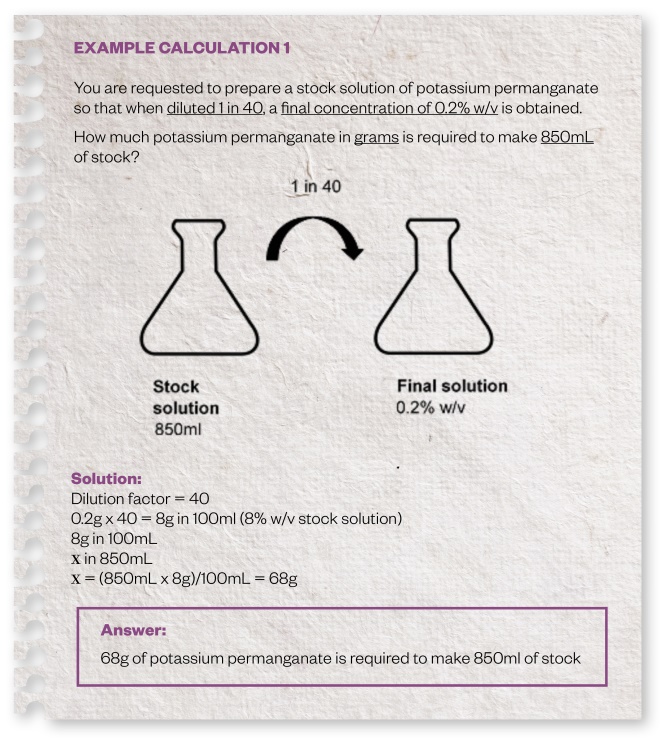
3. Know the units and conversions
It can be incredibly frustrating to answer a question and still not receive a mark for it because the final answer was not displayed in the correct units or number of decimal places.
Always give answers to the nearest whole number, unless asked otherwise.
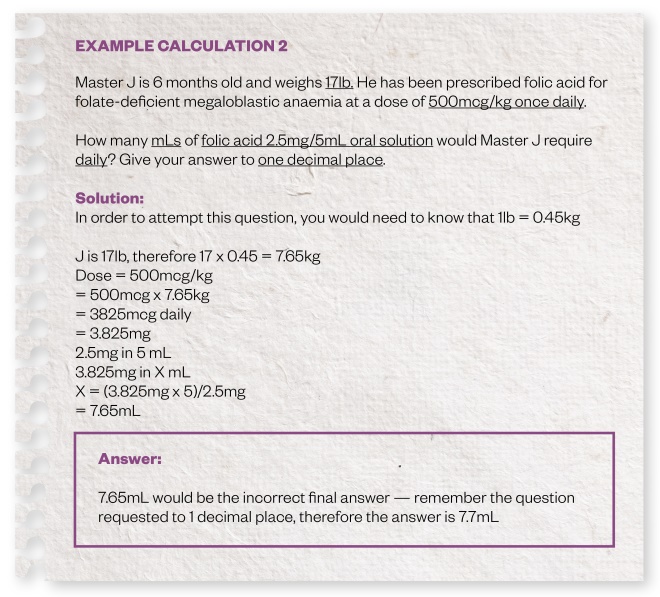
4. Check the final answer makes sense
When attempting questions, it is important to consider the practical applications.
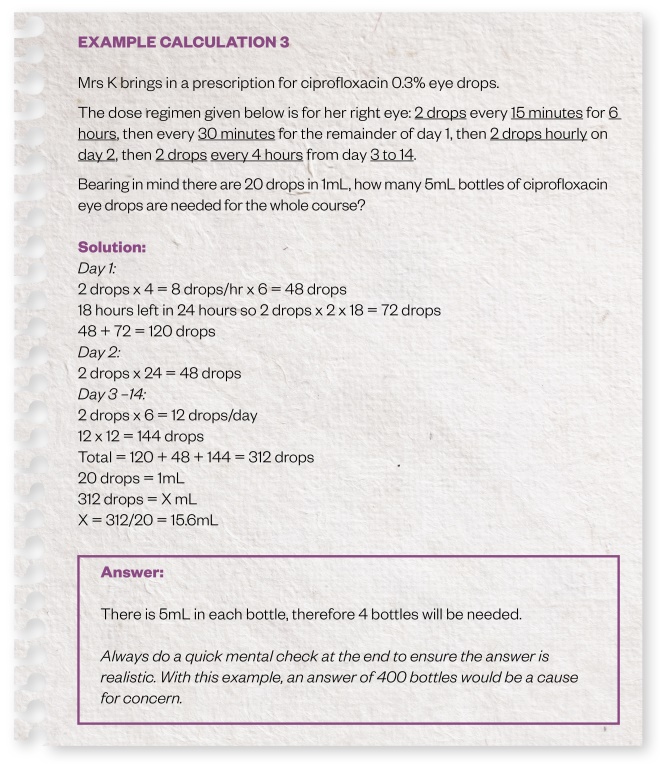
5. Round the answer at the correct time
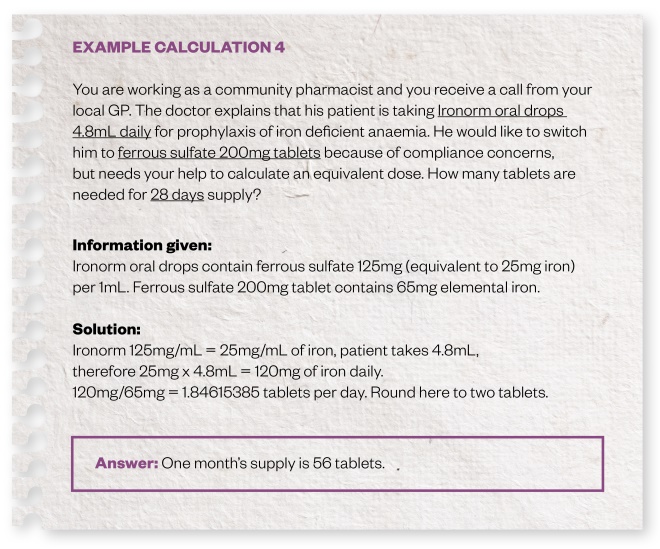
It is necessary to round individual doses because the patient cannot take 1.8 parts of a tablet as shown in the example. If rounding occurs at the end of this calculation, it is likely to be wrong; for example 1.84615385 x 28 = 51.6923077 = 52 tablets.
6. Extract and interpret the right information
Candidates are given a resource pack, which may contain extracts of the BNF, patient information leaflets or drug SPCs (summary of product characteristics). Be confident with navigating through the resource pack, and in particular with SPCs, as they are often filled with information that can be overwhelming.
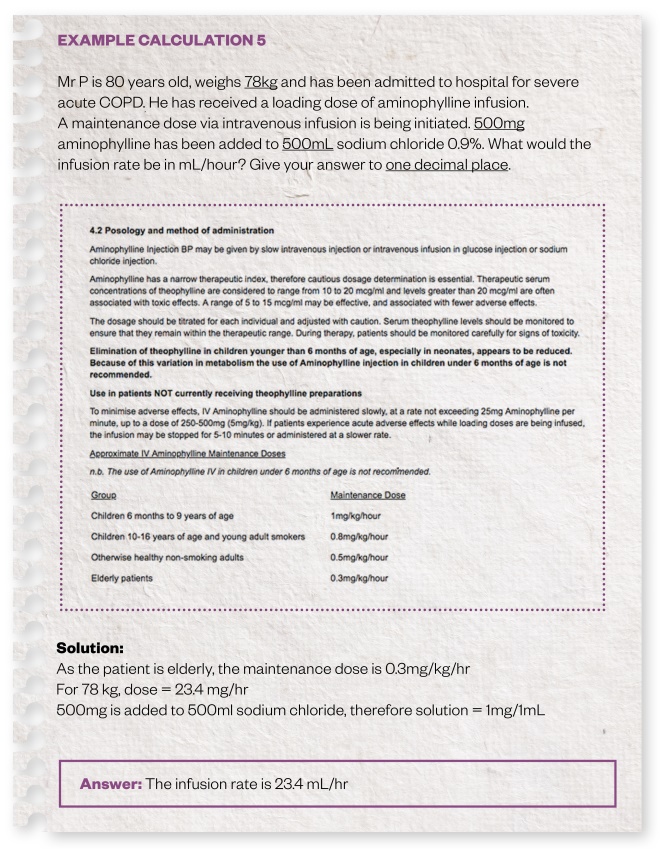
7. Formulae to memorise
There are a number of formulae that candidates are required to remember for certain questions. For the example below, you would need to know the equation for loading doses in order to manipulate the information provided.
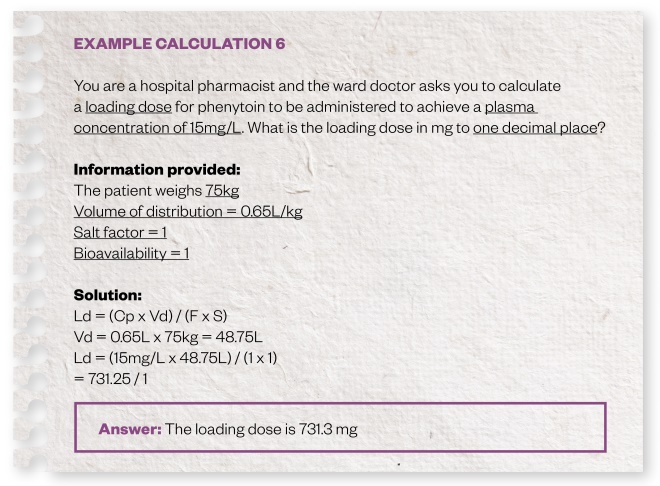
8. Practice weaker points
As the June assessment is almost here, preregistration trainees should spend the time left wisely. Time should be spent practising the types of questions that candidates may feel weaker at. The number of steps in solving calculations should be reduced to save time and minimise the risk of making a mistake in the process.
If candidates encounter an unfamiliar question in the exam, it is advised an educated guess be made, as the exam is not negatively marked. As much as candidates should aim for 100% in the exam, not knowing the answers to some of the questions does not mean a fail.
We wish candidates all the best for the exam, you will get through it like the rest of us.
About the authors:
Abida Begum and Urvasi Patel are newly qualified pharmacists working as part of the PharmaLearning team.
PharmaLearning was set up to make the transition through pharmacy school and the preregistration year easier.
References
[1] Registration assessment framework. General Pharmaceutical Council. Pharmacyregulation.org. 2018. Available from: https://www.pharmacyregulation.org/53-registration-assessment-framework (accessed June 2018)
[2] Aminophylline Injection BP. Summary of Product Characteristics (SPC) — (eMC). Medicines.org.uk. 2018. Available from: https://www.medicines.org.uk/emc/product/6299/smpc (accessed June 2018)



